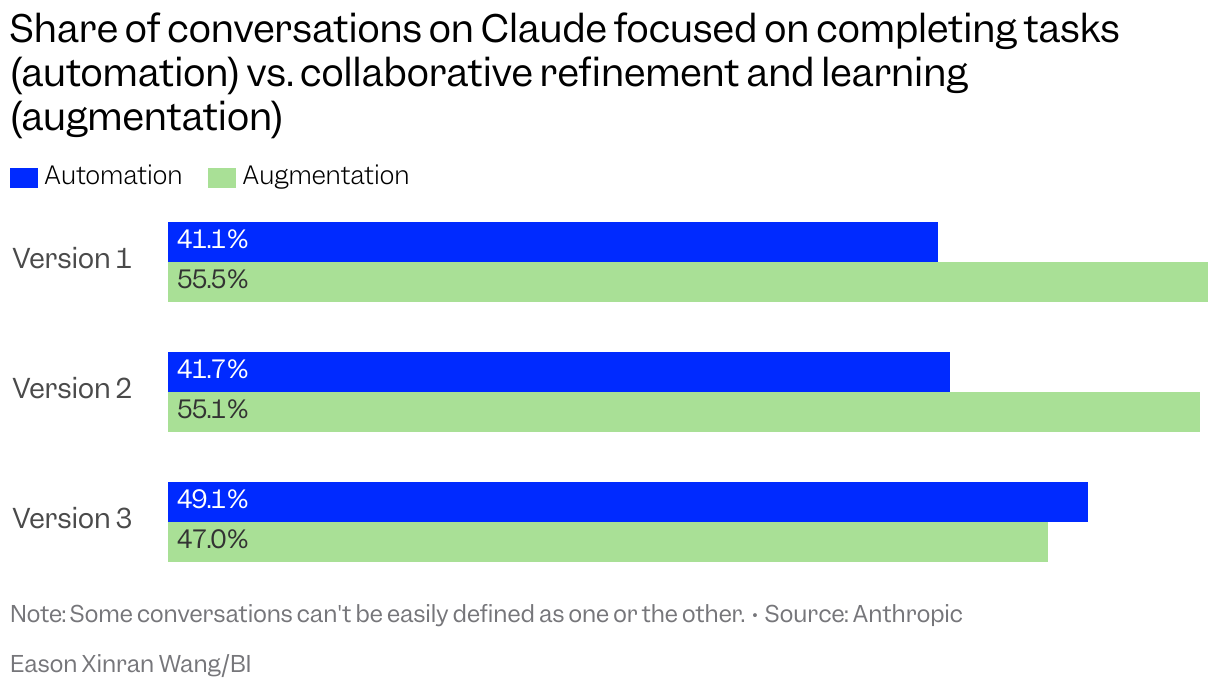subscribers. Become an Insider
and start reading now.
Have an account? .
OpenAI and Anthropic released comprehensive studies this week on how people use AI. The findings reveal diverging patterns: ChatGPT is more about augmentation, while Claude skews toward automation.
OpenAI’s study found that ChatGPT is most popular for writing, editing, summarization, and brainstorming. Students, marketers, and knowledge workers use it to draft essays, prep reports, or spin up campaign ideas. Educators tap ChatGPT for quizzes, tutoring, and simplifying complex topics.
OpenAI sliced the data into three buckets. “Doing” conversations focus on delivering output that can be plugged into a production process. “Asking” chats support decision-making but do not produce output directly. “Expressing” mostly covers other use cases. As of late June, there was a lot more Asking, according to OpenAI’s study.
Anthropic’s study found Claude leans more heavily into software development and enterprise automation. Coding and other math-based tasks make up more than a third of usage. Companies embed Claude in workflows for document processing, report generation, and bulk coding. This was the third of these studies released by Anthropic, and this latest version was the first where automation usage exceeded augmentation.
For now, ChatGPT thrives in consumer productivity, where users iterate alongside it. Claude is more about workplace efficiency, as some enterprises increasingly delegate entire tasks. Companies may run both in the future: ChatGPT for communication and creativity, Claude for structured enterprise-scale execution.
Sign up for BI’s Tech Memo newsletter here. Reach out to me via email at abarr@businessinsider.com.
Read the full article here



